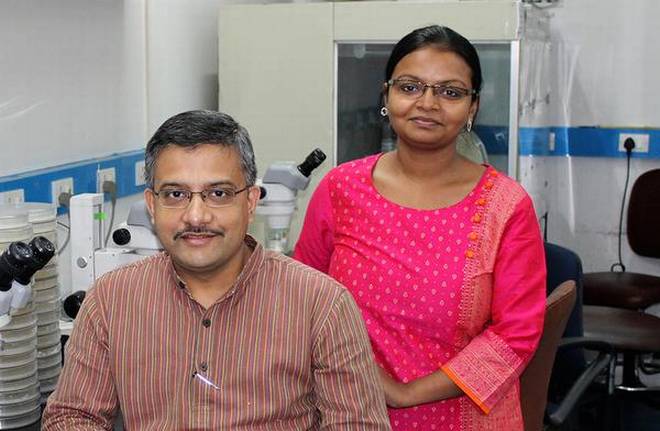From an average of about 18 days in the lab, the longevity of C. elegans, the popular model organism for ageing research, increased 40–60% when researchers used a mutant that lacked the function of a particular gene (flr-4) and fed them a specific bacterial diet — E. coli strain H. The mutant worms fed another bacterial diet — E. coli strain O — did not show any increase in life span. Scientists use the term “diet-gene pairing” to describe such events.
So far, only four gene-diet pairs that modulate longevity have been discovered using these worms. And researchers from the National Institute of Immunology (NII), New Delhi led by Arnab Mukhopadhyay have discovered the fifth such pair. The results were published in the journal PLOS Genetics.
That longevity increases with reduced caloric or dietary restriction is well known. But in this study, there was increase in life span of the mutants even when there was no restriction on the quantity of food consumed. To find out the relation of flr-4 gene and dietary restriction, the researchers generated a condition where the mutant worms had reduced food intake.
One would expect the dietary restriction in the mutants to cause an additive effect leading to further increase in life span. “But we did not see an additive effect. So the cellular module or mechanism by which food restriction increases lifespan overlaps with the mechanism by which flr-4 mutation increases longevity. This shows that organisms have evolved distinct as well as overlapping ways to evaluate both the quality and quantity of diet to regulate lifespan,” says Dr. Mukhopadhyay.
“The study shows a specific interaction between a gene and a particular diet. This tells us how we are interacting closely with food at the molecular level,” he says. “Since such gene-diet pairings that regulate life span are not yet characterised in mammals, we are using a simple model organism to find out specific nutrients and genes which together will increase longevity.”
The understanding of gene-diet pairings is important as it will give researchers a handle to engage a targeted approach to regulate lifespan. Though it is currently at a very nascent stage, it might become possible some day in the future to increase the lifespan of humans by changing a gene-diet interaction.
Mechanism of action
The researchers found that when the mutant worms lacking the flr-4 gene feed on H strain of E. coli bacteria, but not the O strain, the p38 MAPK pathway gets activated. This activated pathway then increases the expression of cyto-protective XDP genes, leading to enhanced protection of the cells from age-induced damages, thereby increasing the lifespan.
To validate the role of the p38 pathway and XDP gene in cell protection leading to increased lifespan, the researchers suppressed their activity in the mutant worms. The lifespan of the mutants was reduced and became comparable with normal worms.
“We are currently studying whether it is micronutrients, vitamins, fat or carbohydrate produced by the E. coli that is being sensed by the pathway leading to increased longevity,” says Dr. Mukhopadhyay.
The flr-4 gene is present only in specific tissues, such as neurons and gut. “The lifespan was more [40-60%] when the gene was knocked out [removed] from the entire body than from the intestine or the neurons alone,” says Sonia Verma from NII and first author of the paper. “We have not been able to knockout the gene from both the intestine and the neurons at the same time. So can’t say if there will be an additive effect. But the indications are that these two tissues independently contribute to life span.”
